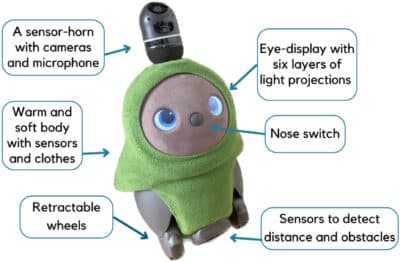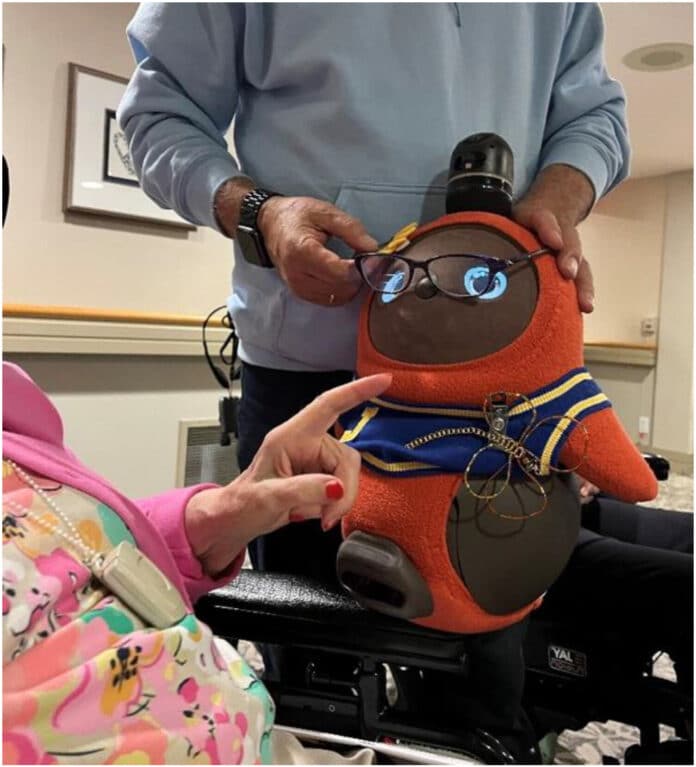HN Summary
•AI robots as companions: Vancouver researcher Dr. Lillian Hung studied LOVOT social robots in Canadian long-term care homes, finding they provided joy, comfort and emotional support, especially for people with dementia.
• Boosting connection and creativity: Residents, families and staff reported that the robots sparked smiles, laughter, storytelling and imaginative play, breaking isolation and inspiring new ways to communicate.
•Future potential in care: While not a substitute for human contact, social robots offer unique benefits as low-maintenance companions and could be used in long-term care, rehabilitation and mental health settings to reduce loneliness and distress. could shape new guidelines to improve survival in burn patients.
Artificial intelligence-enabled robots offer companionship for long-term care residents, bridging the gap between technology and human touch.
As Canada’s aging population continues to grow, so does the demand for innovative solutions to enhance the care and quality of life for older adults. At the forefront of this technological shift is Vancouver Coastal Health Research Institute researcher Dr. Lillian Hung, whose new study explored the potential of social robots to support well-being among residents of long-term care homes. Published in the Journal of Rehabilitation and Assistive Technologies Engineering, findings from this research reveal powerful insights into how technology can create new pathways for emotional engagement and social interaction, particularly for people with dementia.
While visiting Japan for another research study, Hung encountered LOVOTs: accessible, easy-to-use artificial intelligence (AI)-enabled companions. “These robots were very popular,” says Hung. “People bought them outfits, made them jewelry and treated them like pets. I became curious about how my own patients would interact with this kind of technology.”
Equipped with wheels, cameras and microphones, LOVOTs can see and hear their surroundings to enable interactive behaviours, such as tracking movements, recognizing faces and reacting to sounds. The robots also respond to gentle petting or hugs, enhancing the sense of physical and emotional connection. Using machine learning algorithms, they learn to adjust their actions to better suit the user’s needs and desires based on previous interactions.
“I have seen firsthand how dementia can leave people isolated,” notes Hung. “I was interested in uncovering how social robots like LOVOTs can offer not just companionship but real, tangible emotional support.”
Breaking down barriers to connection among older adults
For her study, Hung brought two LOVOTs to Canada, named Mango and Kiwi, to investigate how they could impact the emotional and social lives of long-term care residents. Over a year, Hung and her research team visited various care homes, community centres and public libraries. In one of the care homes, 36 participants, including family members and staff provided valuable feedback about the residents’ emotional responses to the robots.
Following discussions with participants about their experiences with the robots, researchers identified three key ways in which LOVOTs supported the psychosocial needs of older adults: joy, creativity and acceptance.
The researchers found that the presence of LOVOTs brought a sense of novelty and excitement to everyday routines, breaking up the monotony of long-term care settings. Whether playing with the robots or watching them dance, participants were often seen smiling and laughing during their interactions.

The robots also inspired self-expression among participants. “Since the robots do not speak human language, participants had to use their imaginations to interact,” says Hung. “Some people came up with their own languages for them, and some created fun stories about the robots based on their own memories, which sparked further conversations among staff and residents of the care homes.”
Another critical finding was how the robots provided a consistent and reassuring presence. This was particularly meaningful for those who struggled with verbal communication or who experienced confusion due to dementia.
For example, Hung recalls a participant with dementia who was considered to be ‘aggressive’. “People would warn us to use caution around this particular resident because he could be unpredictable and combative. However, when he was playing with the robots, all the aggression evaporated. It left everyone in awe, because they had never seen his affectionate side before.”
Robotic companions in long-term care pave the way for future health care applications
While social robots are not a replacement for other forms of companionship, such as that of a pet, family member or friend, they do offer some unique benefits. Unlike cats or dogs, social robots do not require food, water or medical care, making them an ideal option for individuals with mobility issues or dementia.
“Robots like LOVOTs are specifically programmed to seek out affection and respond to emotional cues,” Hung explains. “For people in long-term care, this technology provides a source of companionship without the physical or cognitive demands of caring for a pet.”
In the future, Hung envisions broader applications for LOVOTs and other emerging forms of social robots, such as in critical care and rehabilitation centres, where patients often experience pain, isolation or emotional distress. They may also play an important role in mental health care, helping those experiencing depression, anxiety or social isolation to feel loved.
“There is something fundamentally comforting about having a companion, even one that is robotic,” says Hung. “For people struggling with their mental health, the emotional connection a robot offers can be a vital part of the healing process.”

